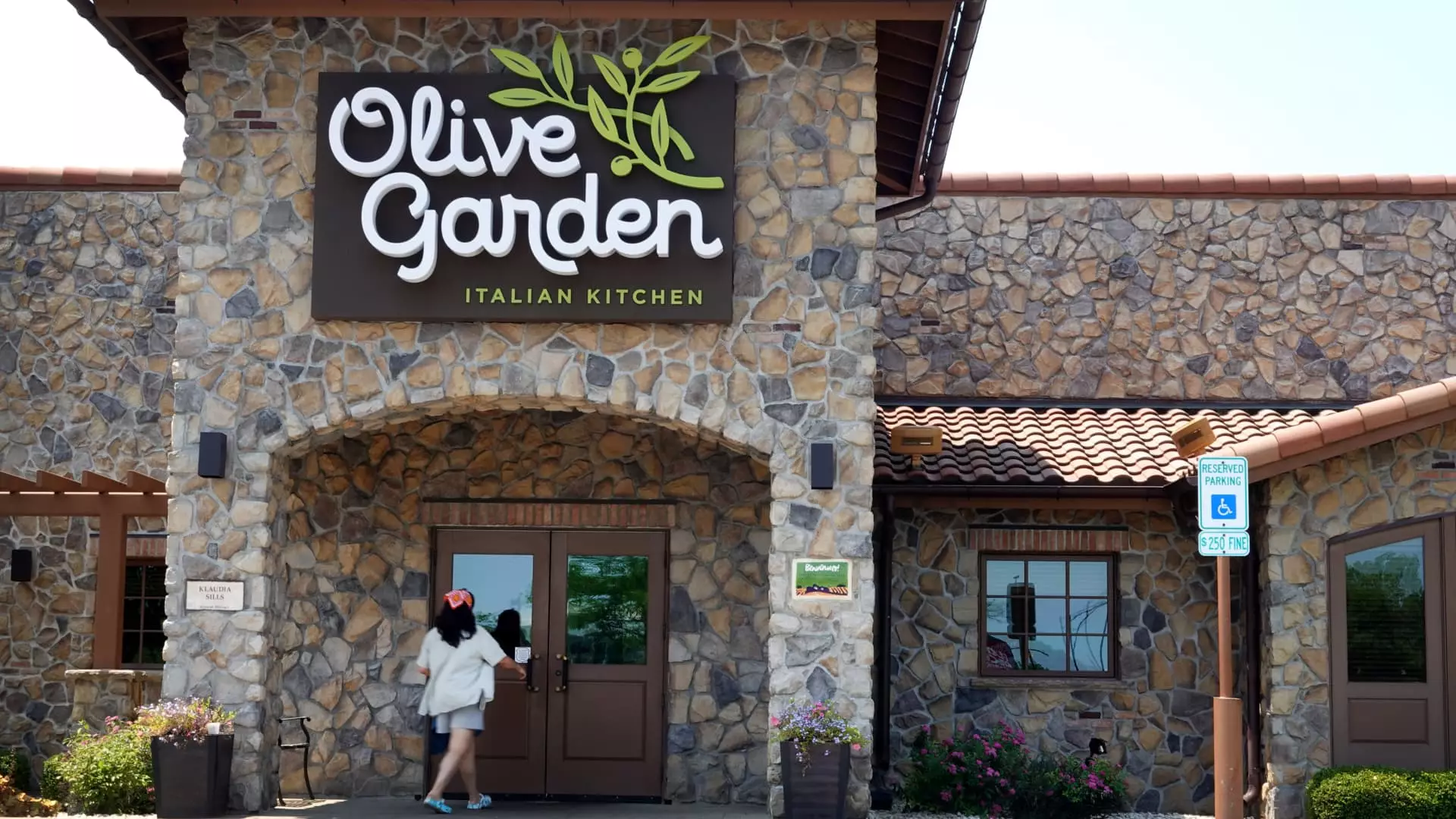Darden Restaurants, a prominent player in the dining sector, recently disclosed its quarterly earnings, revealing a less-than-stellar performance compared to market expectations. The results, which encapsulate the period ending August 25, highlight a significant downturn in sales across major chains such as Olive Garden, alongside its fine dining establishments. Such outcomes not only reflect immediate operational challenges but pose questions about strategic direction amidst fluctuating consumer preferences in a post-pandemic landscape.
CEO Rick Cardenas addressed shareholders with an optimistic tone, reiterating faith in Darden’s operational resilience despite missing earnings forecasts. The reported earnings per share (EPS) for the quarter were $1.75, falling short of the anticipated $1.83. Meanwhile, total revenue reached $2.76 billion, which also fell below analyst predictions of $2.8 billion. This divergence raises concerns regarding Darden’s competitive positioning and ability to attract customers during tense economic conditions.
Darden’s overall net income grew to $207.2 million for the quarter, marking an increase from the previous year’s $194.5 million. However, the same-store sales decline of 1.1% indicates a deeper issue with customer acquisition and retention. Notably, Olive Garden experienced a troubling 2.9% decrease in same-store sales, a trend alarming for a restaurant that has traditionally been a cornerstone of Darden’s portfolio. The impending revival of the “Never Ending Pasta Bowl” signifies a tactical response aimed at driving foot traffic back to locations.
In contrast, LongHorn Steakhouse, Darden’s standout performer, reported a commendable 3.7% growth in same-store sales. This reinforces the notion that while certain segments may struggle, others can capitalize on consumer desire for specific dining experiences, particularly ones that evoke a sense of comfort and familiarity.
Despite these mixed results, Darden has maintained its projections for the full year, targeting earnings per share from continuing operations between $9.40 and $9.60, alongside net sales in the range of $11.8 billion to $11.9 billion. This confidence suggests a commitment to long-term objectives and an understanding of the cyclical nature of consumer spending in the hospitality sector.
Moreover, the recent acknowledgment of sharp traffic declines in July, followed by a slow recovery, underscores the volatility of restaurant patronage in response to broader macroeconomic conditions. CFO Raj Vennam’s commentary indicates a reactive strategy but also hints at a potential for sustained recovery if management enacts appropriate measures to invigorate sales channels.
While Darden Restaurants faces apparent headwinds with disappointing first-quarter metrics, the leadership’s proactive approach to customer engagement and brand revitalization offers glimpses of hope for potential turnaround efforts. As the industry grapples with rapidly shifting consumer behavior, Darden’s ability to adapt and innovate will be crucial for reclaiming market position and ultimately fostering long-term growth amidst an ever-evolving dining landscape. The company stands at a crossroads where strategic decisions made today could shape its successes for years to come.

